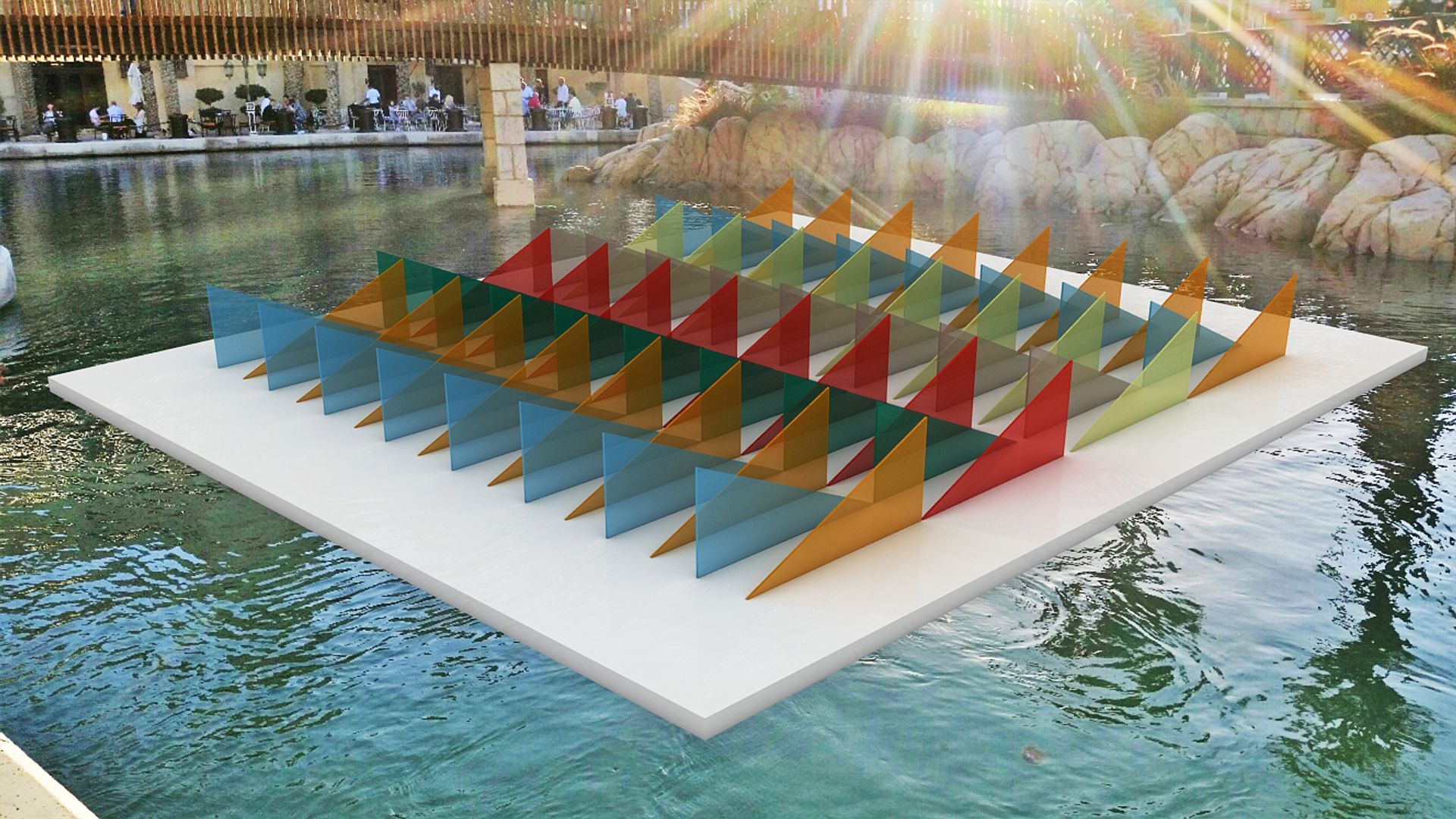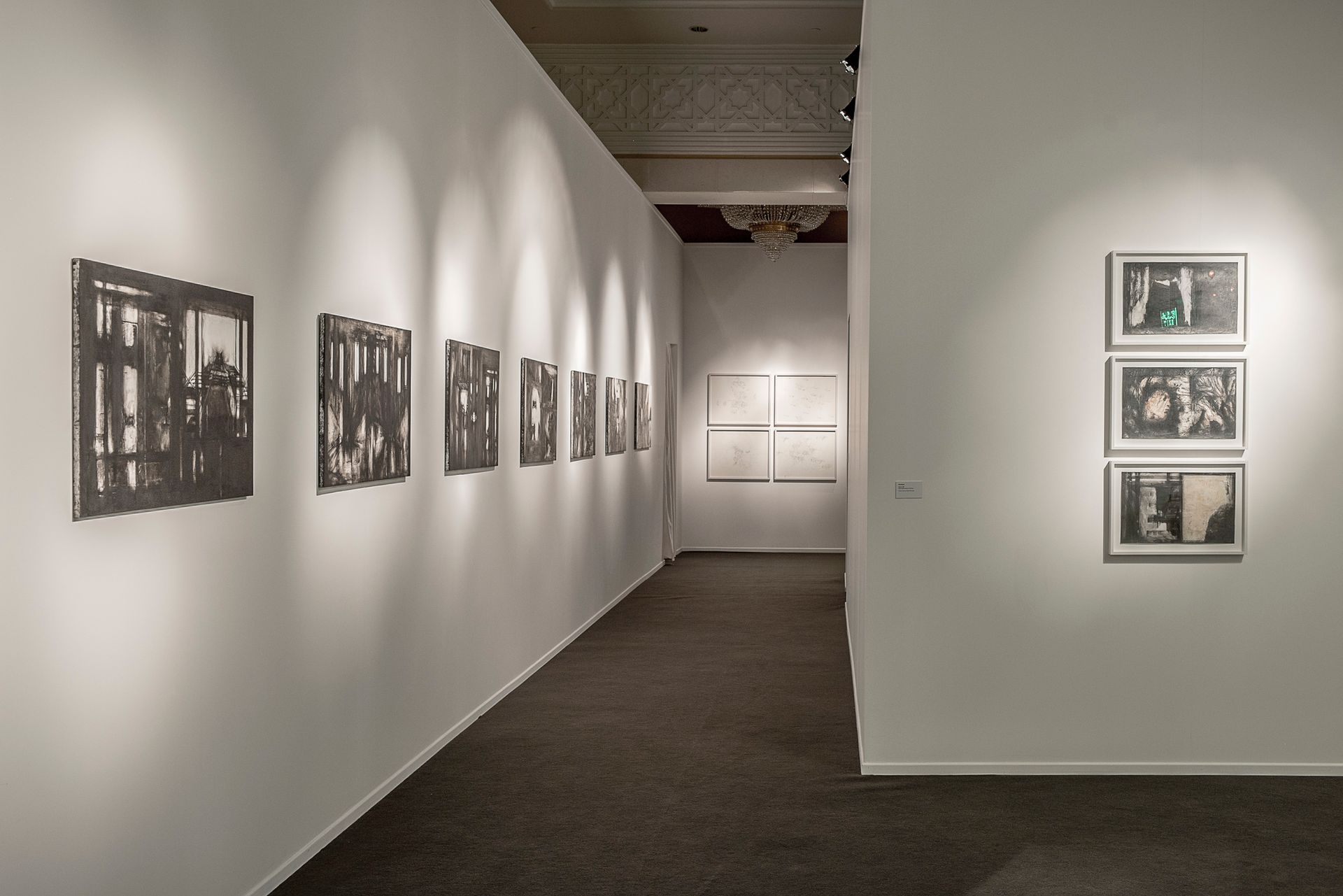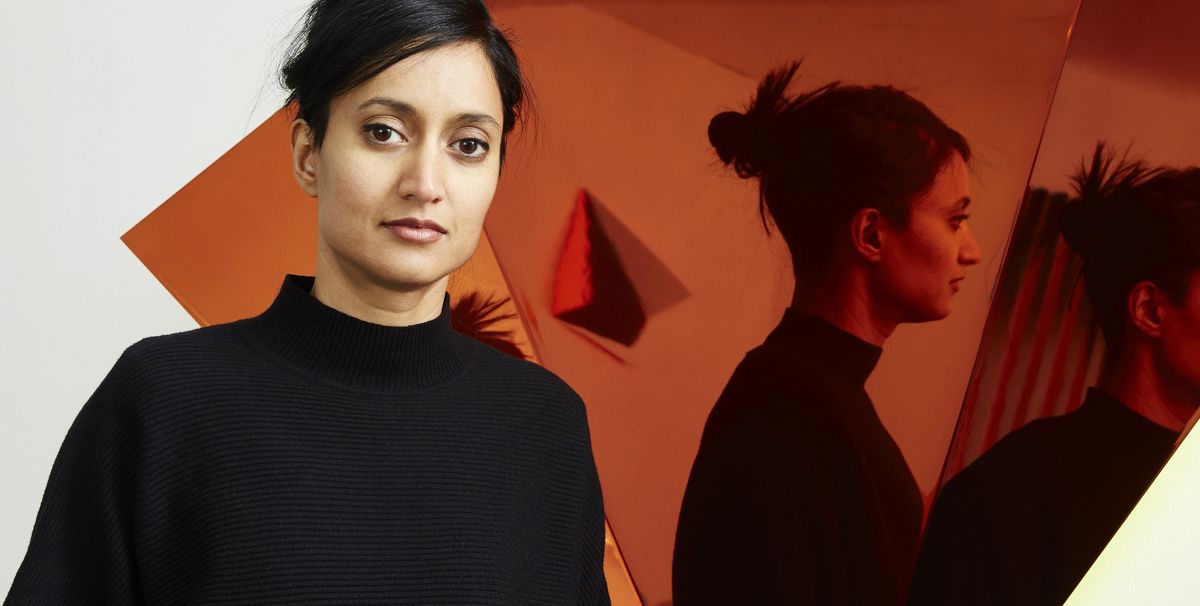It was her show at London’s Parasol Unit that provided Rana Begum with the impetus to begin the journey that culminated this week with the unveiling of her Abraaj Group Art Prize (AGAP)-winning installation at Art Dubai, No. 695 (2017).
The London-based Bangladeshi artist, an alum of Chelsea College of Art & Design and the Slade School of Fine Art, was awarded the coveted prize last October, receiving a bursary of $100,000 to realise a site-specific project at Art Dubai, working with curator Omar Berrada. And the prize-winning work, which was unveiled near the Abraaj lounge on Tuesday night, demonstrates a clear progression in Begum’s creative evolution and a high point in a career spanning over 15 years.
No. 695 is an approximately 10m by 11m installation of geometrically organised coloured, triangular glass panels, embedded into a floating base. On encountering it for the first time, it appears to be, almost literally, a colour field. Walk around it, gaze down its length, squint along its width, peer through its diagonals. As sunlight moves inexorably overhead, reflecting the surrounding waterway, the work constantly offers the viewer a unique visual moment, a poem of colour and texture.

The Art Newspaper: Congratulations on winning the Abraaj Prize. How did your application come about?
Rana Begum: I was asked by the galleries and a few other people to apply, especially because of my [September 2016] show at Parasol Unit, which allowed people to see an overall picture of how my work has developed over the last 15 years. At that show were MDF panel paintings, a series I had started in 2011. I had been craving getting into painting and exploring the idea of overlapping colours, how one colour affects the other. I felt I had been losing focus a little bit recently and I wanted to get back into that.
So this is where you were at that time and you knew where you wanted to go to next, exploring paint, which isn’t something you’ve done in the past.
I don’t use paint often, I’m not con dent with it. But when I applied for AGAP that’s where I felt the direction of the work was going. And the show at Parasol showed me how these different series connect. I knew I could take that leap with the Abraaj Prize and take that risk.
So that led directly to the piece we see here this week?
Yes, it was taking those paintings and simplifying them a bit – almost imagining them on the floor. Imagining these planes, rising up from the floor and being able to walk around and seeing how the light changes the colours, filtering through these panes of glass.
I love how in your work the vantage point creates a unique view.
For me, normally, it takes a long time to get to that stage. A series of works will be developed over a number of years and it takes a long time to get to that stage where a viewer can physically walk around a work and understand it.
Did the work’s setting in Dubai have a significant effect?
I got slightly carried away with scale – I think it’s one of the largest pieces AGAP would have and it’s certainly one of the largest things I have made! One of the reasons I proposed this for Dubai, was that I was thinking about the light, the yellowish warm light. I wanted to use light, and this proposal fitted quite well with showing outside in Dubai. These three elements of light, colour and form come together and you make the experience with the three, to reflect the light, the landscape and the urban environment, the city itself.
The scope of the local landscape covers the city and the desert...
You’ll see that, depending on the viewpoint, the piece becomes quite landscape-like, almost like mountains. At certain points, as you shift position, you get this incredibly bold, geometric shape, shards, sticking out of the base. As you shift your position in relation to the work, it reminded me of the sand, and the sandy landscape. With the other images, depending on your position, it becomes incredibly architectural, so I thought this was interesting.
It ventures into a lot of themes your work has explored in the past, colour, texture and environment and takes it all to a new level...
I hope so. I wanted to invest it back into pushing my work, pushing further and further and still continue to explore some of the areas I have not drained yet. I am still excited by my older bar pieces. It’s great to be able to push those works through this installation.

Abraaj Artists 2017
In a show curated by Omar Berrada these are the runners-up for the 2017 AGAP.
Raha Raissnia
The Brooklyn-based Iranian artist’s work at the AGAP exhibition includes paintings from her Series in Fugue, and drawings from the series Alluvius.
Sarah Abu Abdallah
Saudi Arabian artist Sarah Abu Abdallah is an artist and puzzle-maker, whose Mornings Of Hope (2017) is a video- projection onto wooden circle panels.
Doa Aly
Egyptian artist Doa Aly is represented by Gypsum Gallery, Cairo. Her work, spanning video, drawing and performance, has been exhibited internationally. At the AGAP exhibition, she is showing House of Rumor, a four channel audio-visual installation, with 18k gold necklace and drawings.


